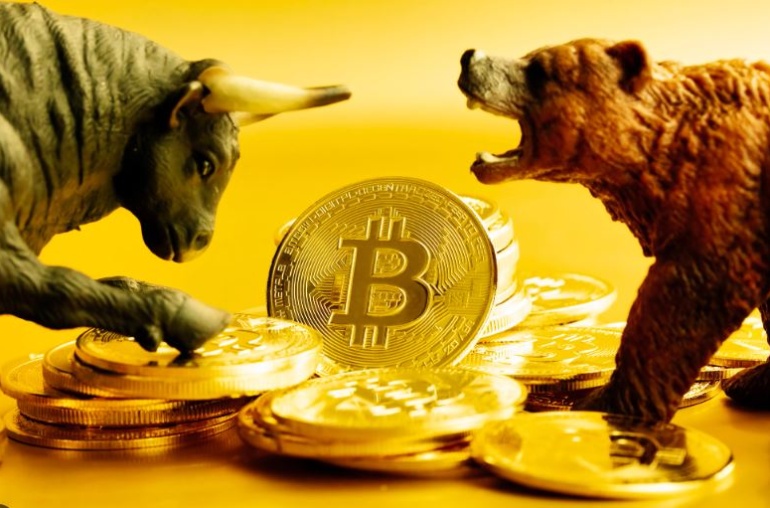Many recent Ponzi schemes have used decentralized finance( DeFi) structures to defraud their guests. This composition explores the DeFi ecosystem and how fraudsters are suitable to exploit it to steal from crypto newbies. Representation of cryptocurrency and the word ‘DeFi’ displayed on a screen in the background are() seen in this illustration print taken in Poland on November 6, 2021.( print by Jakub Porzycki/ NurPhoto via Getty Images) NurPhoto via Getty Images DeFi is a broad term for fiscal structure and fiscal services handed on public blockchains via smart contract technology.
Ether ETH Binance Chain, Cardano ADA, and Solana SOL are among the most popular smart contract blockchains, allowing inventors to produce dApps( decentralized operations) on their network. These apps can be used for various purposes, but their maturity is fiscal in nature, giving rise to the term “DeFi.” Defi development has progressed to the point where token creation templates live, allowing anyone to produce a commemorative in a matter of twinkles without any programming knowledge or experience. This opens the door to Pandora’s box, where token generators can produce great decentralized operations. At the same time, vicious people can use the technology to produce vicious dApps similar to Ponzi schemes. Ponzi schemes are illegal in practice. Some blockchains are decentralized, and there’s no single governance in charge of administering compliance with original laws. Some centralized blockchains are grounded in areas with little or no oversight over their operations. This opens the door for fraudsters to set up Ponzi schemes on these chains. utmost blockchains that allow for the development and deployment of dApps don’t bear a know your- client( KYC) process. This means that people can produce dApps anonymously. So, what exactly are Ponzi schemes, and how do they serve in the DeFi space? A Ponzi scheme, named after the Italian con artist Charles Ponzi, is an investment fraud that pays investors with finances collected from new investors. It doesn’t inescapably invest the finances of the investors. Still, it promises investors high returns in a short period, which are constantly more advanced than all other mainstream yields. Original Caption) Charles Ponzi, the “fiscal wizard” of Boston who succeeded in amassing a() fortune through his endless chain of deals of Foreign Exchange following the World War, latterly went to Florida where he hoped to recoup his losses of$ owing to investors from his former scheme. In this print, he’s shown in an intriguing station as he rests in Jacksonville, Florida. Bettmann Archive Ponzi schemes calculate the number of new investors adding indefinitely. However, if a Ponzi scheme fails to attract new investors, it’ll collapse snappily. likewise, if many investors rush to withdraw their finances, the Ponzi schemers realize they’re losing plutocrats and close shop because they’re unfit to recognize the debts. In other cases, authorities may raid a Ponzi scheme office, and it collapses incontinently upon discovering that it’s an illegal enterprise. For illustration, the most recent Ponzi scheme involved Eddy Alexandre, CEO of EminiFX, who promised investors a daily five return on investment. The FBI restrained him last week for allegedly defrauding his guests out of further than$ 59 million.
He claimed to have a “Robo- Advisor supported account” system to invest moneybags in crypto and Forex. Guard similar swindles and practice due industriousness before investing in such a product. Ponzi schemes in the DeFi space may take a different approach to defraud guests. This can range from promising the coming 100x ZRX moonshot( a token ended at a low price in exchange for a licit coin/ commemorative with the pledge that the new token value will increase 100 times) to promising high staking prices for new token holders. In other cases, DeFi Ponzi scammers will vend commemoratives to unknowing buyers while promising high staking prices. Staking prices and yield husbandry are the two most charming features in DeFi ecosystems. Defi druggies will deposit and lock their commemoratives on the platform to earn a rare chance yield because DeFi ecosystems calculate on staked commemoratives for agreement. This means that if you stake your commemoratives on a DeFi platform that pays out, say, 1000 percent( yes, they can get that high) annually, you’ll have ten times further commemoratives in a time. still, because the maturity of actors is also staking, the staking prices quantum to token affectation drives the price down. This means that for you to vend your staked commemoratives for a profit after a time, the ecosystem must witness a significant increase in new investors to neutralize the adding force. Because it relies on new investors to maintain its value, it’s analogous to other Ponzi schemes. Of course, not everyone will agree with me, but the parallels are striking. However, its price frequently crumbles, If a DeFi protocol with high staking prices doesn’t attract new investors and is unfit to burn redundant force. Fraudsters who vented commemoratives for Bitcoin, Ethereum, Binance Coin, or any other putatively precious commemorative make the most profit. Put, con artists vend their guests an asset they can inflate for an asset they can not, promise high returns, and submerge the request with further commemoratives in exchange for further commemoratives that they can not inflate after the DeFi protocol goes live. On the other hand, yield husbandry depends on the community furnishing liquidity for actors to buy recently formed commemoratives on a decentralized exchange. A yield planter will technically buy an equal bone quantum of two means. Half goes to the recently formed commemorative, and the other half to a counter commemorative/ coin like Ethereum or USDT. The new liquidity is added to a pool on an automated request maker( AMM) platform( frequently described as a decentralized exchange). New entrants to this pool can automatically convert their commemoratives similar to Ethereum or USDT for the recently formed commemorative.
The freights charged on deals in this pool are distributed automatically to the liquidity providers( yield growers). To constantly earn high yields from yield granges, fraudsters may charge high sale freights, and unborn growth heavily relies on a massive increase in new druggies. utmost yield ranch prices will be nominated in the recently formed commemorative. As the Defi Ponzi scheme expands, fraudsters constantly attack this automated liquidity by swapping recently formed commemoratives for the counter coin/ commemorative, driving the price down to zero or close to it. Yield growers and stakes in utmost DeFi Ponzi schemes are frequently left holding billions of empty commemoratives.A good number of DeFi protocols give value and mileage to their investors. Others help fraud by going through inspection instruments while others plan periodic token becks to reduce affectation. The cryptocurrency space has become a breeding ground for crypto Ponzi schemes. These scams lure investors into believing they can make huge returns by investing in the latest and greatest cryptocurrency project. In reality, these schemes are nothing more than a way for bad actors to take advantage of unsuspecting investors looking for an easy way to get rich quickly Defi spaces have become one of the most popular places for these scammers to operate because they offer opportunities for easy money and quick returns on investment–and deFi spaces are notoriously easy targets for scammers.






